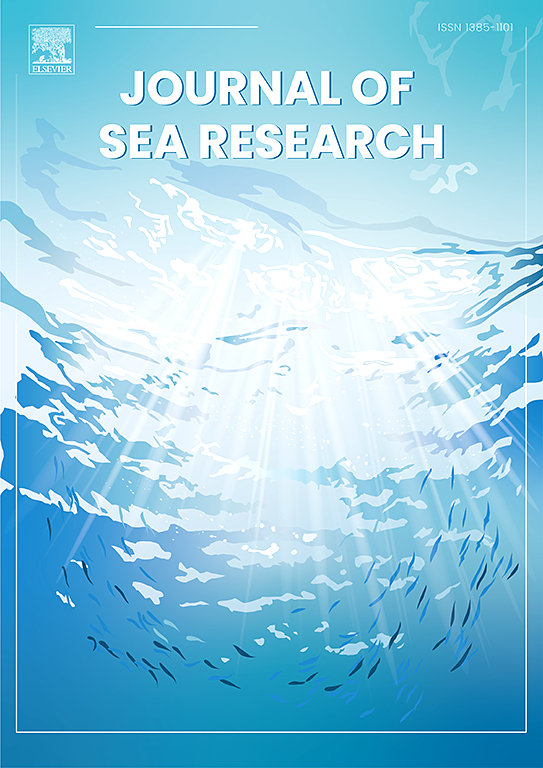Stock exploitation status of silver croaker (Pennahia argentata) from the East China Sea
IF 2.9
4区 地球科学
Q2 MARINE & FRESHWATER BIOLOGY
引用次数: 0
Abstract
Silver croaker (Pennahia argentata) is an important economic species in the East China Sea (ECS); however, its population has been declining, and studies on its status are scarce. This study collected biological data, including length, weight, and gonadal maturity of silver croaker from the southern coastal waters of Zhejiang Province between 2015 and 2021, to evaluate its life history and assess stock status. Methods from the TropFishR package were employed to estimate population growth and natural mortality parameters. Two widely used length-based data-limited models, length-based bayesian biomass estimation method (LBB) and length-based spawning potential ratio method (LBSPR), were applied to assess the stock status of silver croaker in the ECS. The results indicated that with a maximum age (Amax) of 4 years, the asymptotic length (Linf) was 23.80 cm, growth rate (K) was 0.74/year, and natural mortality coefficient (M) ranged from 1.068 to 1.376. Under the assumption of Amax = 5 years, Linf was 26.77 cm, K was 0.63/year, and M ranged from 0.818 to 1.193. The LBB and LBSPR models showed that, except for scenarios with L∞ = 23.8 cm, M/K = 1.46, and L∞ = 26.77 cm, M/K = 1.30, 1.38, or 1.48, the selectivity at length parameters and for silver croaker exhibited an increasing trend over the years. In the LBB model, for different years consistently fell below the optimum length (Lc_opt), indicating that most individuals did not reach the size at first sexual maturity or optimal catch length. Moreover, under high fishing pressure, the Spawning Potential Ratio (SPR) and the unfished biomass ratio (B/B0) for silver croaker showed a decreasing trend, despite some stability or recovery in recent years. However, in all scenarios, SPR values were below 0.2, and B/B0 values were below 0.5, suggesting a significant risk of population collapse for silver croaker in the ECS due to intense fishing pressure. Therefore, it is recommended to reduce the current fishing pressure and increase the minimum catch size of this species for effective conservation and management in this region.
中国东海银鱼的种群开发状况
银鱼(Pennahia argentata)是中国东海(ECS)的一个重要经济鱼种,但其种群数量一直在下降,有关其现状的研究很少。本研究收集了 2015 年至 2021 年浙江省南部近岸海域银花鱼的生物学数据,包括长度、体重和性腺成熟度,以评估其生活史和种群状况。采用 TropFishR 软件包中的方法估算种群增长和自然死亡率参数。应用基于长度的贝叶斯生物量估算法(LBB)和基于长度的产卵潜能比法(LBSPR)这两种广泛使用的基于长度的数据限制模型来评估 ECS 中银鱼的种群状况。结果表明,在最大年龄(Amax)为 4 年时,渐近长度(Linf)为 23.80 厘米,生长率(K)为 0.74/年,自然死亡率系数(M)为 1.068 至 1.376。在 Amax = 5 年的假设条件下,Linf 为 26.77 厘米,K 为 0.63/年,M 为 0.818 至 1.193。LBB 和 LBSPR 模型表明,除 L∞ = 23.8 cm、M/K = 1.46 和 L∞ = 26.77 cm、M/K = 1.30、1.38 或 1.48 的情况外,银鱼的长度选择性参数 L50S 和 L95S 均呈逐年上升趋势。在 LBB 模型中,不同年份的 L50S 始终低于最适长度(Lc_opt),表明大多数个体未达到性初 熟尺寸或最适捕捞长度。此外,在高捕捞压力下,银鲳的产卵潜势比(SPR)和未捕捞生物量比(B/B0)呈下降趋势,尽管近年来有所稳定或恢复。然而,在所有情况下,SPR 值都低于 0.2,B/B0 值低于 0.5,这表明在高强度的捕捞压力下,东亚大陆架上的银鱼种群有崩溃的巨大风险。因此,建议减少目前的捕捞压力,增加该物种的最小捕捞量,以有效保护和管理该区域。
本文章由计算机程序翻译,如有差异,请以英文原文为准。
求助全文
约1分钟内获得全文
求助全文
来源期刊

Journal of Sea Research
地学-海洋学
CiteScore
3.20
自引率
5.00%
发文量
86
审稿时长
6-12 weeks
期刊介绍:
The Journal of Sea Research is an international and multidisciplinary periodical on marine research, with an emphasis on the functioning of marine ecosystems in coastal and shelf seas, including intertidal, estuarine and brackish environments. As several subdisciplines add to this aim, manuscripts are welcome from the fields of marine biology, marine chemistry, marine sedimentology and physical oceanography, provided they add to the understanding of ecosystem processes.
 求助内容:
求助内容: 应助结果提醒方式:
应助结果提醒方式:


